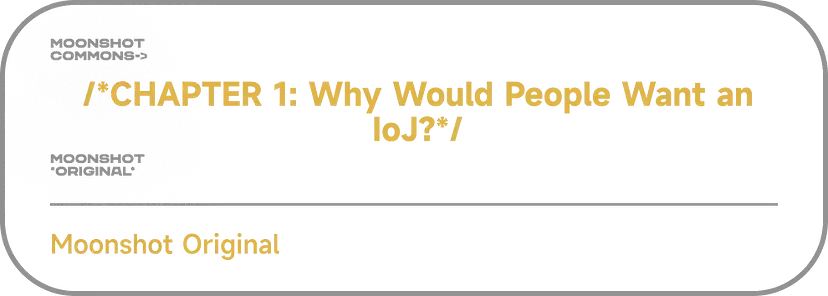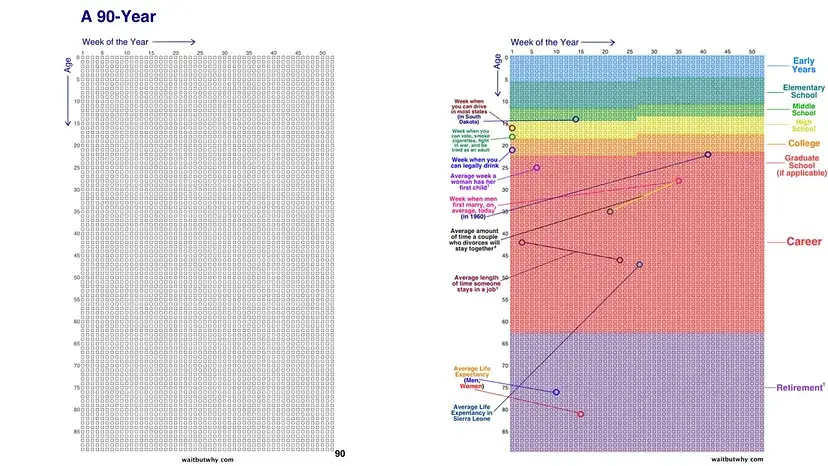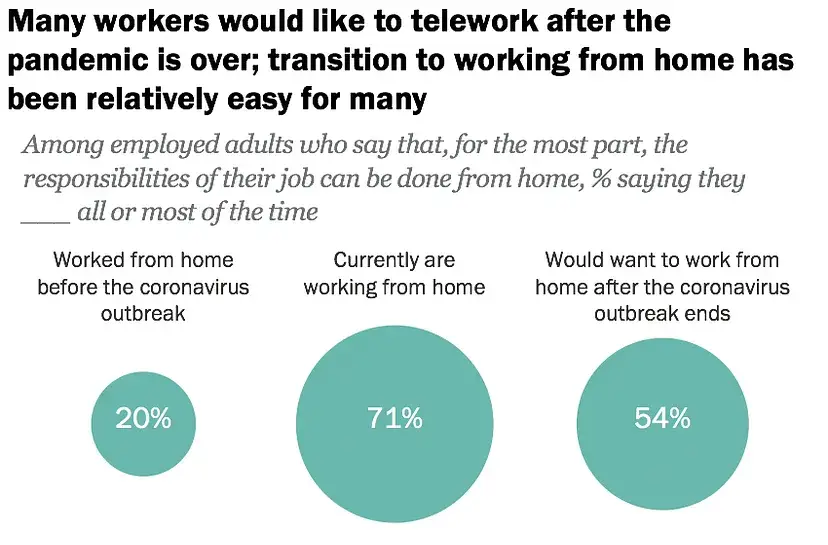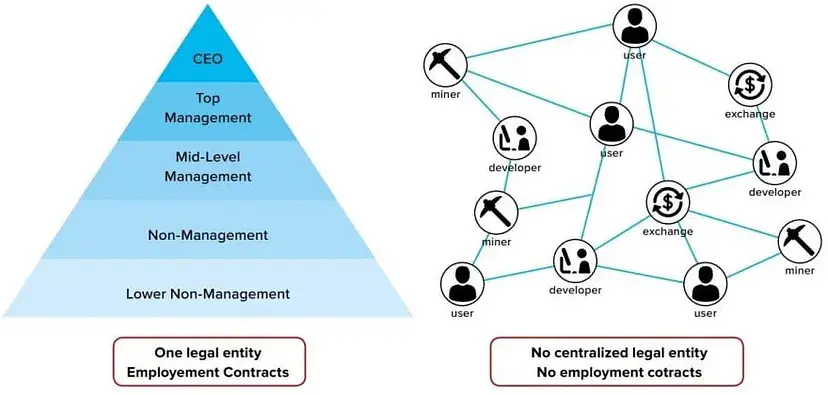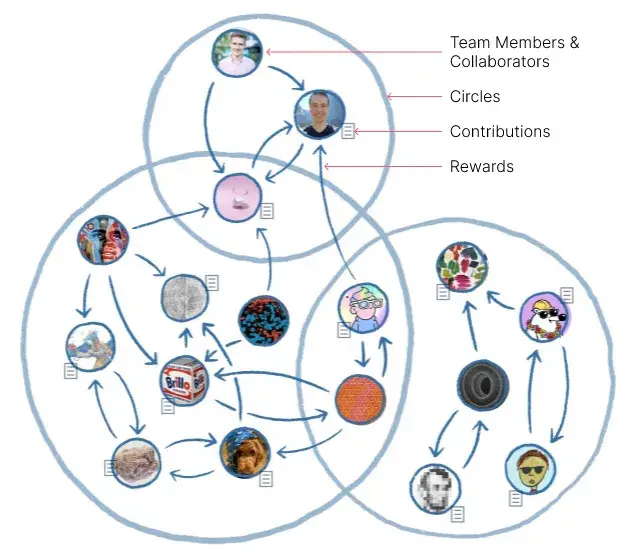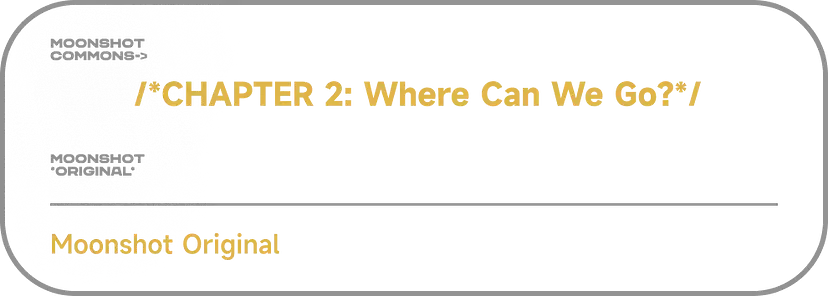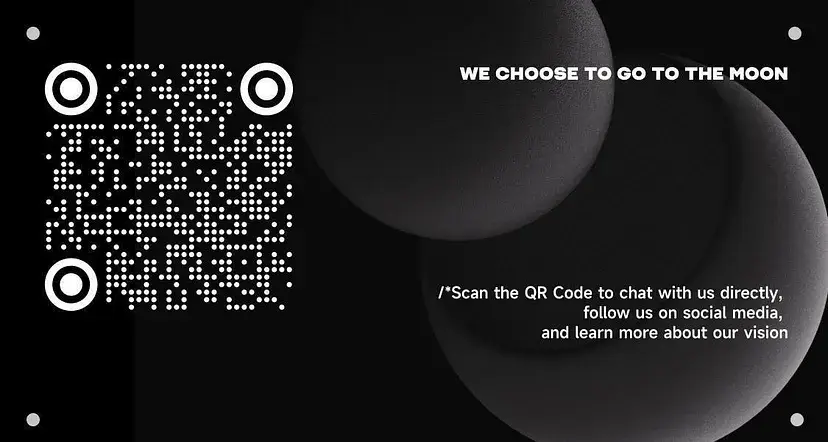“I think most people really do want to believe that they’re contributing to the world in some way, and if you deny that to them, they go crazy or become quietly miserable.” — David Graeber, Author of Bullshit Jobs
Playtime by Jacques Tati, 1967. Source: Hero-Magazine. Executive Summary:
●Blockchains are the Internet of money, and their natural evolution will be to create an Internet of jobs.
●The Internet of Jobs will become one of the dominant use cases for blockchain technology.
●DAOs are a fundamental development for an IoJ because they are able to shake the top-down organization and work distribution.
●There are still many missing developments necessary for IoJ to take off, notably better on-chain communication systems and reputation systems without the cost of identification.
●The pandemic accelerated us into a more digitally integrated world.
In the past few years, many developments have taken crypto by storm. There are DeFi, NFTs, DAOs, and many intersections. We can think of Web3’s tools and applications as steps towards optimizing our productivity for the better. Using crafty incentivization methods and decentralization to our advantage, we can make highly optimized organizations benefit consumers and participants. In simple terms, by using web3 tools, we can fix the problems that exist between the current way of working and create something new and different. These developments slowly push crypto toward a new inevitable use-case, the Internet of Jobs (IoJ).
Where there’s money, there’s work, so logically, an Internet of money may eventually lead to an Internet of jobs, given the right developments. IoJ will be markedly different from the current work paradigm because of blockchains' permissionless, decentralized, and public nature. IoJ will likely gain traction as more people begin to consider the place of work and go “full-time crypto.”
The Internet of Jobs is a result of combining unique organizational structures possible with the real-world labor economy through blockchain technology. It is the biggest use case for blockchain technology, as the labor market is one of the largest markets in the world.
The average number of weeks spent working visualized. Source: Business Insider. In David Graeber’s Bullshit Jobs, he describes a general sentiment held by many employees that various jobs are absolutely unnecessary and serve nothing more than to create mountains of paperwork read by no one and guarded by red tape. These jobs contribute to nothing more than the decay of the human spirit and serve as paid busy work. Worse, there are entire hierarchical structures optimized for this model, with jobs defined by their ability to dish out specifically busy work.
In many ways, the COVID-19 pandemic made people confront the reality of their careers by having them experience it at home. The pandemic increased the number of remote workers, forcing many to confront their occupations at home with little disconnection between their work and home life. Even with employees returning in person, there is still more remote work than ever before. When you spend your entire day at home signing documents and organizing papers, you might start questioning the purpose behind it all.
Increased sentiment for teleworking. Source: Pew Research. In an era characterized by an escalating shift towards digitalization and disconnection in the workplace, employees and employers are compelled to critically evaluate their work methodologies, redefine workplace structures, and reconsider labor allocation. With the Internet of jobs, work may be democratized so that jobs wholly dedicated to “bullshit” will entirely disappear, or at the very least become managed portions of multiple schedules instead of one person dedicated to the minute and monotonous tasks.
Naturally, an Internet of jobs must have an organizational structure to work properly. DAOs, or decentralized autonomous organizations, are emerging organizational structures that are defined by having no central governing authority. DAOs use democratic governance for decision-making after cycling through voting proposals. DAOs can have a number of different purposes. Some DAOs are philanthropic, like EduDAO, which seeks to grow the university network for blockchain innovation. Other DAOs have different purposes, like ConstitutionDAO, which sought to obtain a copy of the US Constitution.
DAO structures offer unparalleled potential for fostering robust community development, aligning incentives effectively, and ultimately addressing the issue of worker degradation. Ownership effects in decision-making reflect that when people have a higher stake in organizations or objects, they feel a sense of belonging or ownership. Diverse methods of governance and voting allow members to not only democratize their work but feel a greater connection to their organization. This is markedly different from traditional organizations that use top-down decision-making, which usually run into the principal-agent problem, where priorities conflict when an intermediary makes decisions for its agents. For an IoJ, this would mean that jobs are distributed fairly and busy work is distributed properly among its members rather than creating hierarchical structures around those tasks and appointing specific people for them. Furthermore, these tasks can be rotated democratically through governance votes so that no one feels that their useless work defines their job.
Furthermore, DAO participation is exceptionally diverse. DAOs may employ bounties to onboard new users by having them do trivial tasks. Some DAOs also have seasonal periods where projects, like coding challenges. They are released to the greater community, and individuals can complete them to be fully onboarded. In a similar vein, compensation has just as much diversity as participation.
Top-down corporate structures do not enhance engagement but emphasize it. Source: LinkedIn. The idea of democratizing the workplace to allow for better distribution of “bullshit jobs” and allowing more tangible ownership may sound far-fetched. Yet, it makes sense because people naturally form greater connections to organizations and objects based on alignment.
Of course, DAOs have their downsides. Most notably, many DAOs struggle with reaching full decentralization and self-sufficiency. This is key to avoiding the friction seen in the typical working world. DAOs also rely on community development and effective coordination to achieve their goals. In other words, a DAO cannot realize its goals without a proper community.
Furthermore, because DAOs form decisions through governance proposals, they can be slow, which is especially detrimental to meeting product deadlines. Traditional organizations use hierarchies to circumvent the slowness of democracy so that not every decision is decided on a vote. If DAOs cannot find a proper balance with their bottom-up approach to decision-making, it can spell disaster. Other common problems DAOs face include voter apathy, issues with the concentration of power, and properly scaling participant growth.
Ultimately, DAO structures enable IoJ to expand beyond the classic web2 applications like LinkedIn, UpWork, or Fiverr. Big intermediaries hold these applications back, preventing working networks from properly forming and defaulting to the classic hierarchical structure through the middleman of a gig web2 application. Many of the limitations to current gig-economy web2 applications can easily be overcome through DAO tooling. Thus, an Internet of jobs is only a natural evolution that will allow for greater expansion into providing a long-term sustainable gig economy and job economy in general.
Opolis is a notable example of a web3 application dedicated to the job space. Opolis provides structure to independent workers and brings more structure to the gig economy. It combines traditional legal frameworks with DAOs in order to bring about DEOs (decentralized employment organizations). Network of Compensation. Source: Coordinape. Some DAOs use tiered structures, like Yearn Finance, that reward compensation based on quality and contribution level, whereas others group compensation based on seasonal contribution. One decentralized payroll platform in particular, Coordinape, offers contributors tokens representing their DAO’s budget allocation to them upon completing their tasks. Furthermore, Coordinape represents whole platforms of DAO contributors, showing their allocations based on their contribution for that epoch of time. With systems like these in place, it is very feasible to visualize a vibrant digital community of occupations in the future. In order for IoJ to develop into the mainstream, it needs to rupture the current work paradigm and have the right tools to do so. As Bullshit Jobs describes, today’s work environment is defined by busy work and taskmasters, jobs no one wants to do, and jobs that heavily rely on distributing those bullshit jobs.
DAOs are essentially necessary because production and work are almost inherently tied to organizations. After all, we need a workforce to bring large projects and wide audiences to life. An unforeseen prerequisite is the nature of on-chain identity. People post under obscure usernames on governance forums, but this underscores an eventual prerequisite — soulbound tokens (SBTs). Soulbound tokens are irrevocable tokens attached to a user’s wallet. These tokens can serve many purposes, including on-chain identification, reputation systems, certifications, and permission credentials. While an important part of crypto is its anonymity, a reputation system of some sort would allow for more complex trust systems and, thus, more complex DAO building. SBTs are important for an IoJ because they allow for better DAO governance. A common problem among DAOs is sybil attacks, where multiple accounts managed by one person or a group try to hijack a governance proposal. There are many ways to combat this. However, many of them involve some form of KYC (Know Your Customer) or reliance on web2 infrastructure, i.e., connecting social media accounts. By having an on-chain reputation system, there would be less reliance on web2. KYC stands for “Know Your Customer” and is a process used in the cryptocurrency industry to verify the identity of users or customers. It is a regulatory requirement designed to prevent illegal activities such as money laundering, fraud, and terrorist financing.
This is not the only IoJ-adjacent use case for SBTs. They may also be used to enhance DAO governance mechanisms. For example, a general flaw with voting systems is that the votes of those who contribute more are valued the same as votes from other contributors. An SBT may be configured to demonstrate a level of contribution and thus allow that participant a greater say in their IoJ DAO. Thus, SBTs would aid in the decentralization and development of on-chain relationships and reputation systems for DAOs. SBTs allow for a more tangible decentralized history. Those seeking jobs can display their history through SBTs and their contributions to past projects.
User Experience and Communication: the Two Critical Developments Required for a Working IoJ
In order for the IoJ to thrive, it will need an exceptional user experience. Similar to how Google revolutionized the search engine, an IoJ application will need to create something with the ease of use and comprehensibility of Google. The job economy is composed of billions of people who come from a wide range of ages and backgrounds. One of the primary challenges in crypto onboarding lies in the user experience, as a significant number of individuals are reluctant to engage with wallets or complete transaction signing. One of the most important advances to optimize the user experience is to create better wallet experiences to interact with applications.
Another important development is communication. Better on-chain communication is absolutely essential for the development of IoJ. The existing dependence on platforms such as Discord and Telegram can inadvertently create isolated enclaves, potentially impeding the realization of a future built on the IoJ paradigm.
Ultimately, IoJ is one of the largest use cases for blockchain technology, but like every other use case for blockchain technology, it faces a list of obstacles and needs a mountain of developments to achieve success. There is a clear distaste for the current work environment, and there is more than enough room for IoJ to develop and break the “bullshit” paradigm.


